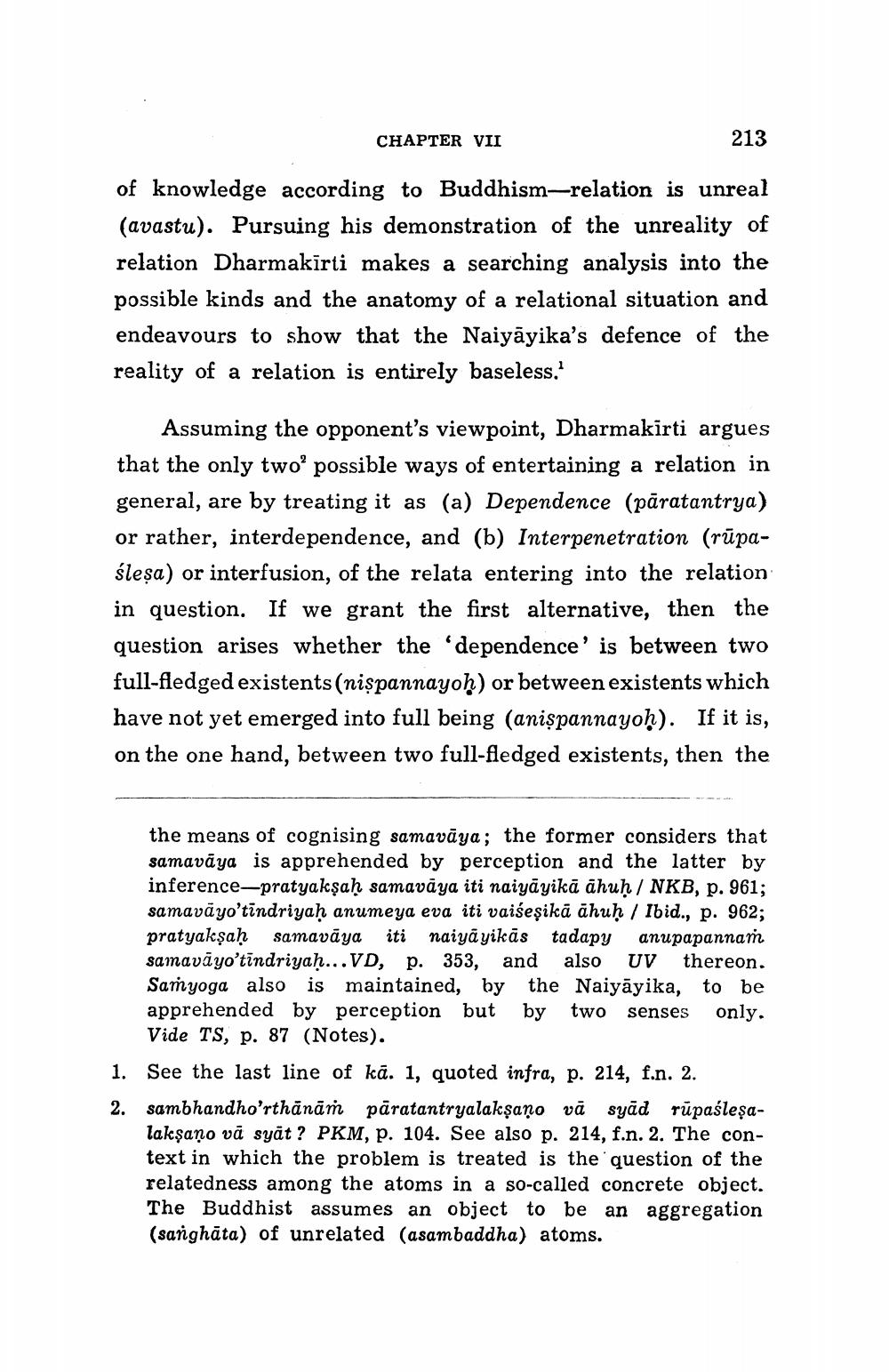________________
CHAPTER VII
213
of knowledge according to Buddhism-relation is unreal (avastu). Pursuing his demonstration of the unreality of relation Dharmakīrti makes a searching analysis into the possible kinds and the anatomy of a relational situation and endeavours to show that the Naiyāyika's defence of the reality of a relation is entirely baseless.
Assuming the opponent's viewpoint, Dharmakirti argues that the only two' possible ways of entertaining a relation in general, are by treating it as (a) Dependence (pāratantrya) or rather, interdependence, and (b) Interpenetration (rūpaśleșa) or interfusion, of the relata entering into the relation in question. If we grant the first alternative, then the question arises whether the 'dependence' is between two full-fledged existents(nispannayoh) or between existents which have not yet emerged into full being (anispannayoḥ). If it is, on the one hand, between two full-fledged existents, then the
the means of cognising samavāya; the former considers that samavāya is apprehended by perception and the latter by inference-pratyakşaḥ samavāya iti naiyāyikā āhuḥ / NKB, p. 961; samavā yo'tindriyaḥ anumeya eva iti vaiśeşikā āhuḥ / Ibid., p. 962; pratyakṣaḥ samavāya iti naiyāyikās tadapy anupapannań samavā yo'tindriyaḥ...VD, p. 353, and also UV thereon. Samyoga also is maintained, by the Naiyāyika, to be apprehended by perception but by two senses only.
Vide TS, p. 87 (Notes). 1. See the last line of kā. 1, quoted infra, p. 214, f.n. 2.
sambhandho'rthānām pāratantryalakṣaṇo vā syād rūpaśleşalakṣaṇo vā syāt? PKM, p. 104. See also p. 214, f.n. 2. The context in which the problem is treated is the question of the relatedness among the atoms in a so-called concrete object. The Buddhist assumes an object to be an aggregation (sanghāta) of unrelated (asambaddha) atoms.




